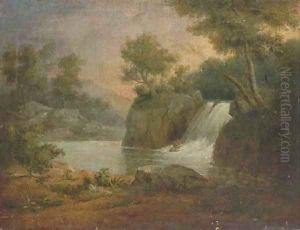James Snr Peale Paintings
James Peale was an American painter born on May 18, 1749, in Chestertown, Maryland. He was one of the younger brothers of Charles Willson Peale, one of the leading figures in American art in the late 18th and early 19th centuries. James Peale, like his brother, began his career as an artist relatively late in life. Initially, he pursued a career in business, but under the guidance of his brother, he developed his artistic skills and began painting professionally in his mid-30s.
Peale primarily focused on miniature portraits, still lifes, and landscapes. His miniatures, executed in watercolor on ivory, were highly sought after and are considered some of the finest examples of the genre from this period. He also painted larger portraits in oil. As a still life painter, James Peale was a pioneer in the United States, and his work in this genre contributed significantly to its development in American art.
During the Revolutionary War, Peale served as a captain in the Pennsylvania militia, an experience that interrupted his artistic career but also provided subjects for later works. After the war, he returned to painting and became an active member of the artistic community in Philadelphia. He was a founding member of the Columbianum, an early American art academy, and later the Pennsylvania Academy of the Fine Arts.
James Peale's work was characterized by its meticulous attention to detail and its vibrant use of color. His portraits often captured the intimate characteristics of his subjects, while his still lifes demonstrated a masterful understanding of composition and lighting. He continued to paint well into his old age, leaving behind a significant body of work that provides insight into the early American artistic tradition.
Peale married Mary Claypoole in 1782, and they had several children who also became artists, including Anna Claypoole Peale, Margaretta Angelica Peale, Sarah Miriam Peale, and James Peale, Jr. This artistic legacy underscored the Peale family's substantial influence on American art of the time.
James Peale passed away on May 24, 1831, in Philadelphia, Pennsylvania. Today, his works are housed in numerous public collections, including the Metropolitan Museum of Art in New York, the National Gallery of Art in Washington, D.C., and the Philadelphia Museum of Art. Peale's contribution to American art history is recognized for his skillful portraiture, pioneering still lifes, and the role he played in the Peale family's artistic dynasty.
